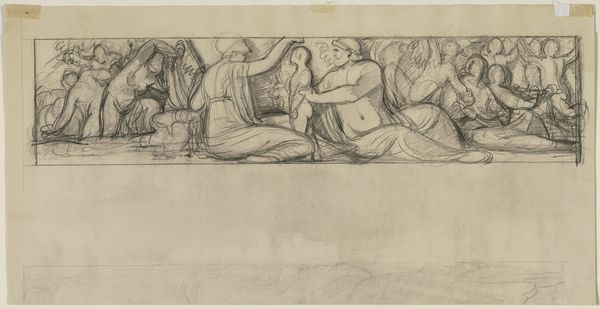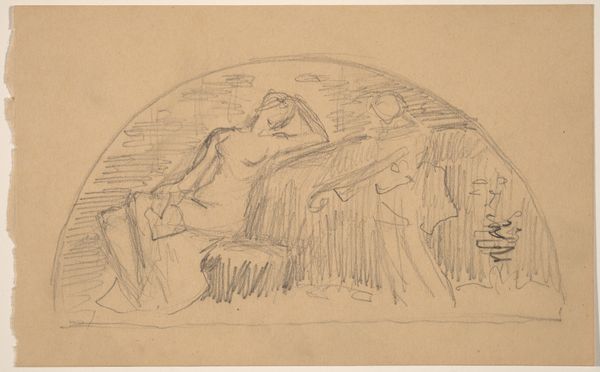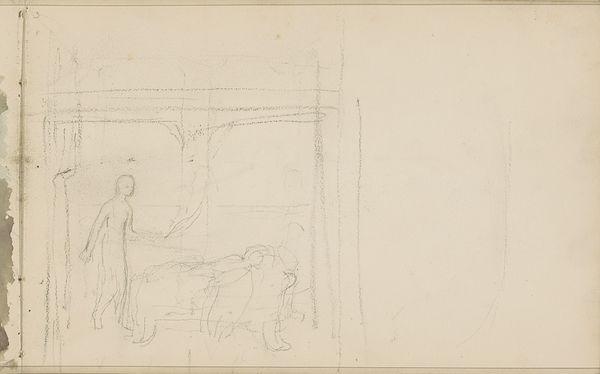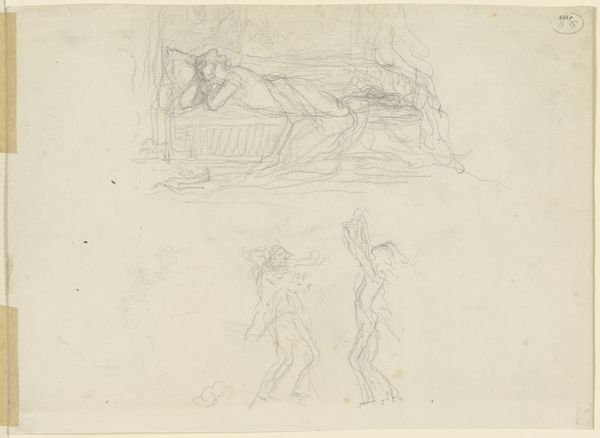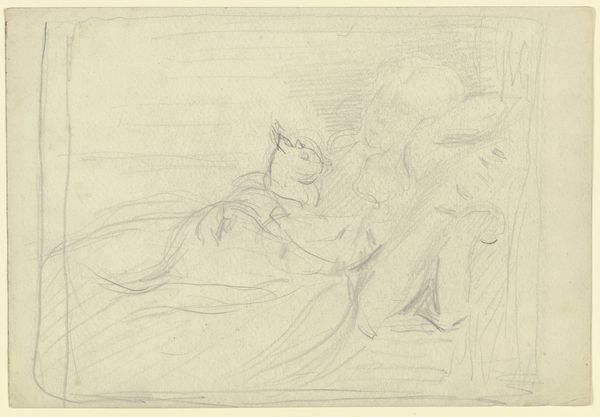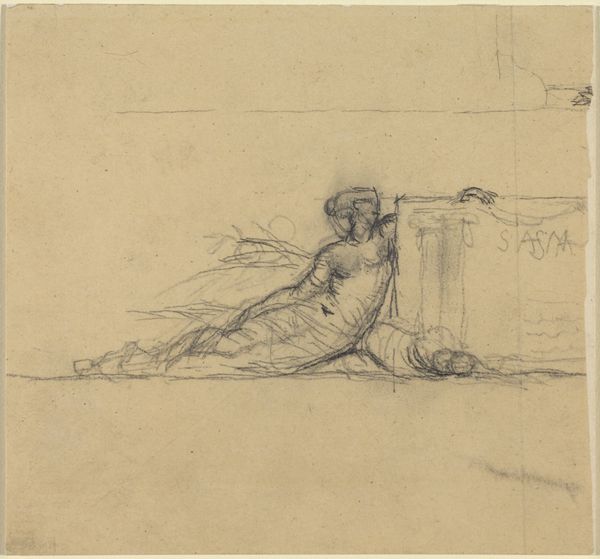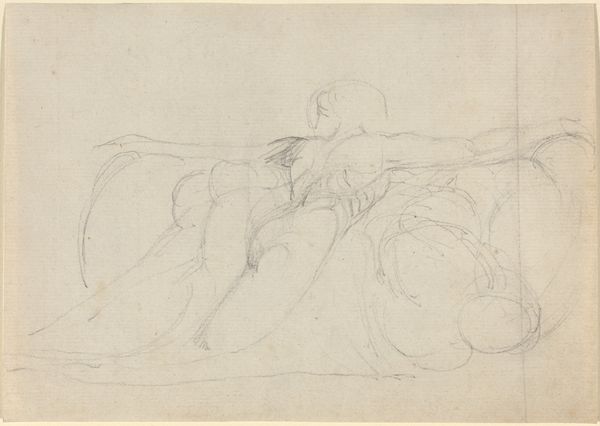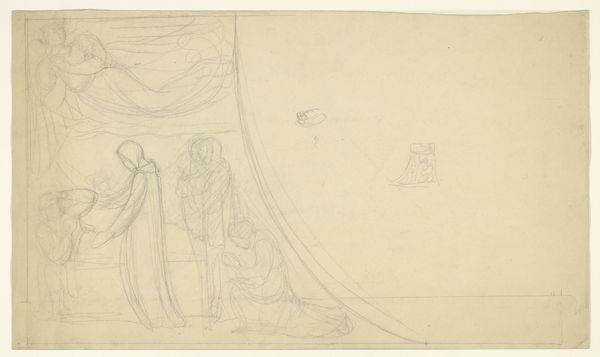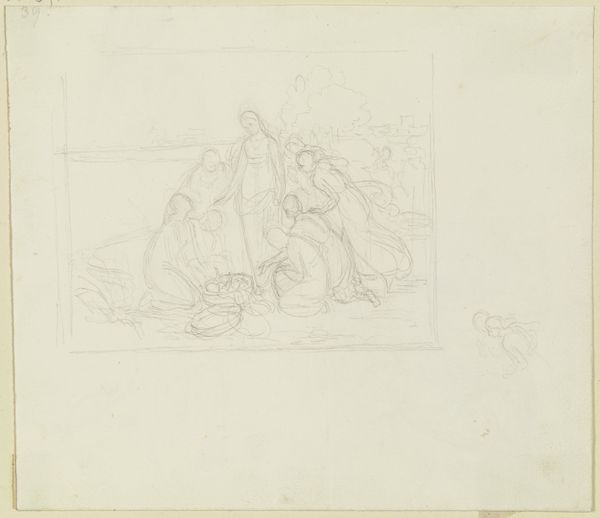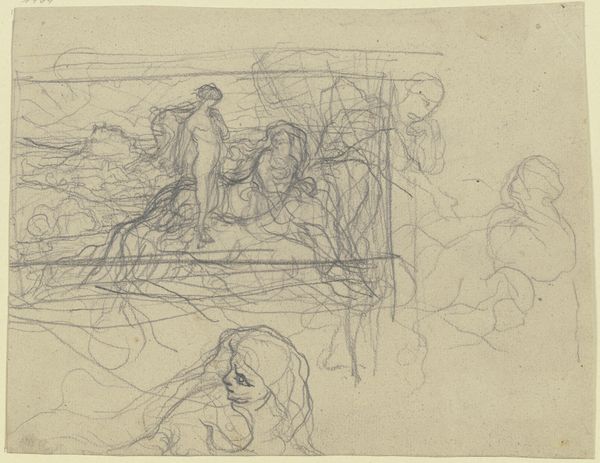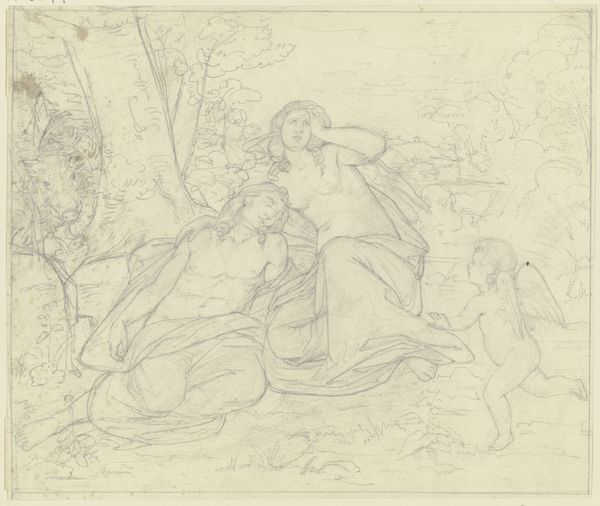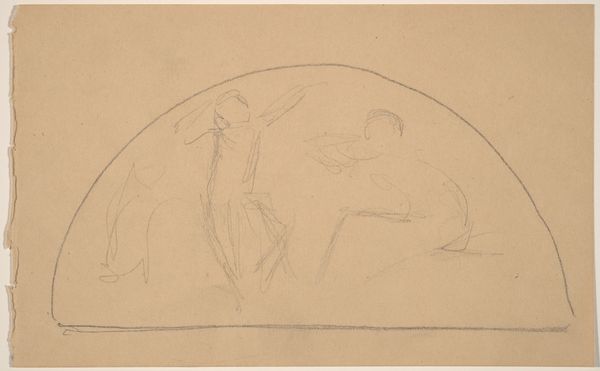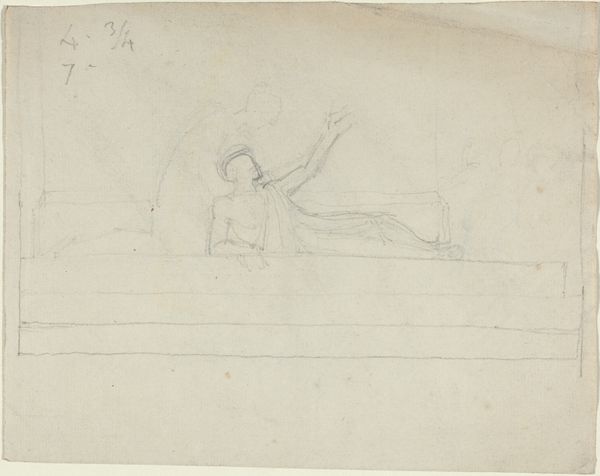
drawing, paper, pencil
#
drawing
#
figuration
#
paper
#
geometric
#
pencil
#
history-painting
Copyright: Public Domain
Curator: This work is titled “Mythological Scene” by Bernhard Neher the Younger, residing here at the Städel Museum. It's rendered in pencil on paper. The composition stretches horizontally, echoing friezes one might see on classical buildings. What's your take on this, seeing it for the first time? Editor: The most immediate impression is one of tentative energy. It’s like witnessing a moment of artistic exploration still unfolding, very different from the highly polished narrative paintings of its era. The rough strokes of pencil against the page evoke a sense of both potential and unrefined expression. Curator: Absolutely. Considering its place within history painting, Neher likely engaged with complex systems of allegorical encoding – gender, power, historical memory... what could a loose reading reveal? Editor: Looking closely at the physical attributes of the paper, the pencil, even the artist's hand, reveals a story too. Was this sketch made in preparation for something larger? I wonder what kinds of pencils were available to him at the time and if this affected the quality of the strokes across the page. We could find something powerful examining those material constraints! Curator: Definitely food for thought. Perhaps we can look into whether this was a preparatory drawing. The subject matter could draw parallels to other prevalent archetypes throughout art history, and examining those motifs through the lenses of contemporary identity politics would be enlightening. How do our personal perspectives influence our understanding and appreciation of mythology? Editor: And by tracing the pencils' material history and its means of procurement at the time? Perhaps the social standing and economic power available to the artist might reveal as much about art making and material agency as it does about Neher. I feel the intersection of art and its historical period often resides at the material and social level of its production. Curator: Precisely! Thinking about access—whose stories get told, and how the medium can become a site for ideological negotiation – allows us a deeper, more meaningful conversation about the socio-political landscape reflected in the art. Editor: Seeing it as more than a static image shifts my understanding of this drawing towards that of material documentation—that tells just as much, if not more, about art. Curator: Agreed. I'm drawn to this notion of it being less fixed than initially meets the eye. Editor: Same here, the importance of pencil stroke has been reaffirmed once again!
Comments
No comments
Be the first to comment and join the conversation on the ultimate creative platform.
